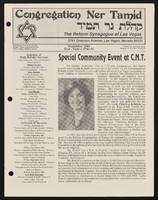Search the Special Collections and Archives Portal
Search Results
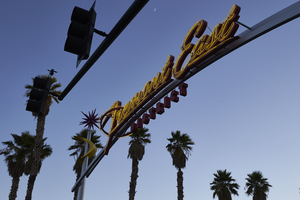
Photographs of Fremont East District sign, June 28, 2017
Date
Archival Collection
Description
Site name: Fremont Street (Las Vegas, Nev.)
Site address: Fremont St and 8th St
Sign owner: Downtown Las Vegas and Fremont East District
Sign details: The Fremont East District really formed together in 2002 for a coalition to maintain the vintage Las Vegas feel particularly by bringing out some vintage looking Neon Signs. This coalition became known as the Fremont East Entertainment District (FEED). Since this area is already close to the Fremont Street Experience with foot traffic the 2007 revitalization also was an effort to create pedestrian friendly sidewalks.
Sign condition: 5 - Very good condition
Sign form: Pole mounted signs
Sign-specific description: The two gateway signs are identical in design to welcome drivers and pedestrians into the Fremont Street District. These signs go across all of the lanes of Fremont Street, so there are two poles on the opposite sidewalks and then two curved steel beams connecting the sidewalk poles, and the main logo is on the curved pole portion. The two steel sidewalk beams each have a yellow curved googie style design. Right above the curved yellow design, on top of the sidewalk beams each have a red starburst orbit. In the middle curved beam there are red channeled Fremont Street East in a mid century modern semi-cursive font, with yellow neon tubes within the channeled letters. Underneath the Fremont Street East letters there is the word DISTRICT in the red channeled block letters.
Sign - type of display: Neon
Sign - media: Steel and Plastic
Sign animation: Yellow neon on gateway signs flash
Sign environment: The gateway to Fremont East District from both the East and West end. One sign is at the corner of Las Vegas Blvd. and Fremont an the other is at the intersection of 8th St.
Sign manufacturer: Fluoresco Lighting and Signs
Sign designer: John Lutz
Sign - date of installation: 2007
Sign - thematic influences: This sign really brings back the mid-century modern theme, and the old Vegas theme as well. The starbursts are similar to the one from the Sweetheart Wedding Chapel Sign.
Sign - artistic significance: This sign speaks to the 1950s/1960s mid-century modern design with the starburst orbits and the yellow curved design.
Survey - research locations: Fremont East website, Floresco
Survey - research notes: Floresco Website http://www.fluoresco.com/pages/about/history.php, as well as contact with Gary Grider of Floresco, Las Vegas Today and Tomorrow Website, http://www.vegastodayandtomorrow.com/fremonteast.htm
Surveyor: Emily Fellmer
Survey - date completed: 2017-08-30
Sign keywords: Flashing; Neon; Steel; Plastic; Pole sign
Mixed Content
Thomas Hickey Political Papers
Identifier
Abstract
The Thomas Hickey Political Papers (1964-1996) contain the professional files of Hickey’s career as a Nevada State Assemblyman and Senator. Materials include constituent correspondence, voting records, memoranda, newspaper clippings, bills, and research documentation on topics such as the Yucca Mountain Nuclear Waste Repository, the Equal Rights Amendment (ERA), education, health, prisons, finance, and Nevada infrastructure. The collection highlights Hickey’s role on committees including finance, transportation, government affairs, and ways and means.
Archival Collection
Mike O'Callaghan Professional Papers
Identifier
Abstract
The Mike O'Callaghan Professional Papers (1943, 1968-2004) mainly consist of research files gathered by Mike O'Callaghan in his post-political capacity as executive editor of the Las Vegas Sun as well as owner and publisher of the Henderson Home News, Boulder City News, and Green Valley News. The papers also contain handwritten and typewritten drafts of O'Callaghan's "Where I Stand" article for the Las Vegas Sun, along with his reporter's notebooks, monthly planners, and photographic prints. The research files cover a wide variety of topics, including but not limited to environmental issues; nuclear waste; state and local politics; military and veterans affairs; foreign relations including Israel, Iraq, and Korea; and education. The collection also contains copies of speeches given by O'Callaghan as the 23rd Governor of Nevada between 1971 and 1979, some of which contain handwritten notations.
Archival Collection
Richard Ronzone Photographs
Identifier
Abstract
The Richard Ronzone Photographs depict Las Vegas, Nevada storeowner and politician Richard “Dick” Ronzone and his family from 1920 to 1989 and 2001. The photographs primarily depict Ronzone at Ronzone’s Store in Las Vegas, at events with politicians such as Nevada Governor Paul Laxalt, or at the Las Vegas Valley Water District. The photographs also depict Ronzone during his service with the Nevada National Guard; portraits of Ronzone, his wife Ann Roeth Ronzone, and his mother Bertha Ronzone; and events during Ronzone’s tenure as a Clark County Commissioner from 1972 to 1980.
Archival Collection
Six Companies, Inc. Hoover Dam Photograph Collection
Identifier
Abstract
The Six Companies, Inc. Hoover Dam Photograph Collection (1931-1935), consists of approximately 400 black-and-white photographic prints contained in two photograph albums and an additional twenty-one loose black-and-white photographic prints with ten corresponding photographic negatives.
Archival Collection
James B. McDaniel Architectural Records
Identifier
Abstract
The James B. McDaniel Records (1960-1978) comprise the plans and drawings created by Las Vegas, Nevada architect James McDaniel who worked independently as James Brooks McDaniel Architect (from 1960-1978) and with a partner as Moffitt and McDaniel Architects, Limited (during the 1970s). This collection includes materials from over 115 projects managed by McDaniel. Records include oversized architectural drawings, and files of architectural projects. McDaniel designed many University of Nevada, Las Vegas (UNLV) buildings, residential, commercial, and landscape designs for Las Vegas clients. Also included are business files of construction estimates, specifications, invoices, change orders, and correspondence.
Archival Collection
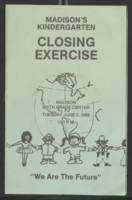
Mabel Hoggard: community interest materials (folder 2 of 3)
Date
Archival Collection
Description
Folder of materials from the Mabel Hoggard Papers (MS-00565) -- Personal papers file. This folder contains event programs, "Going For The Gold: The Story of Black Women in Sports" booklet by Ken Bently (a gift to J. David & Mabel W. Hoggard, not digitized in its entirety), "Pictorial Souvenir Book of the Pennsylvania State Federation of Women's Clubs, Inc." (not digitized in its entirety), and Alpha Kappa Alpha Sorority Theta Theta Omega Chapter 1988 "BLAC-tivities" calendar.
Mixed Content
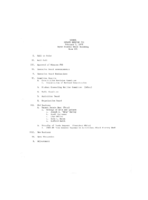
Meeting minutes for Consolidated Student Senate, University of Nevada, Las Vegas, February 06, 1979
Date
Archival Collection
Description
Text
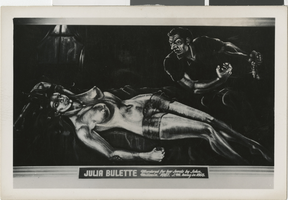
Postcard of Julia Bulette and John Millain scene, Virginia City, Nevada, 1867 - early 1900s
Date
Archival Collection
Description
Image

